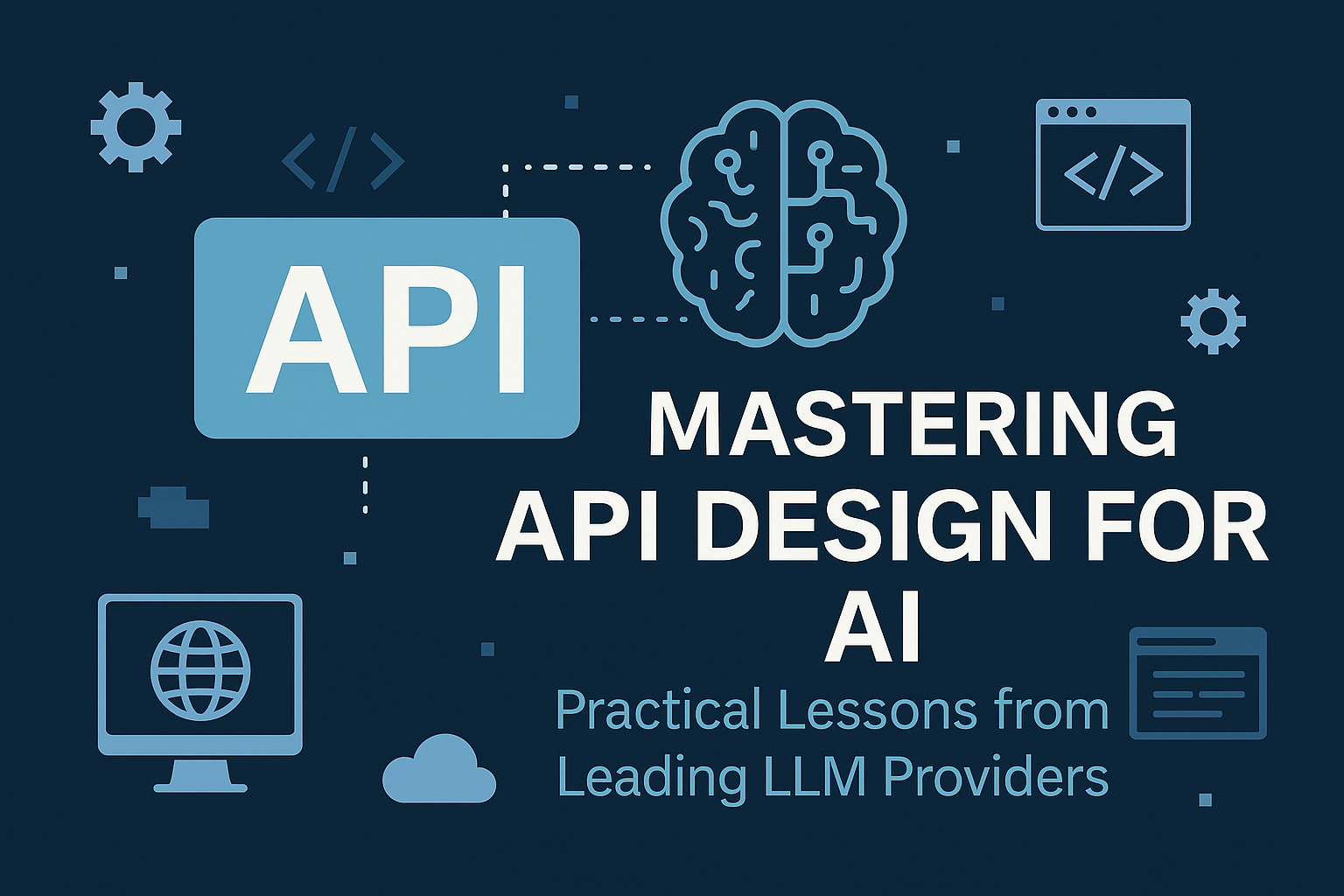
Introduction
If AI is the brain, APIs are the nervous system. They connect thoughts to actions, enabling developers to plug powerful AI models into real-world applications effortlessly. Especially in the era of Large Language Models (LLMs), the quality and usability of your API can make or break the success of your AI offering.
So what makes an API great for AI? Let’s dive deep into what top LLM providers like OpenAI, Anthropic, Google, and Cohere are doing—and the lessons you can steal.
Understanding Large Language Models (LLMs)
LLMs like GPT-4, Claude, and Gemini are the engines behind many modern AI use cases—from chatbots to document summarization to code generation. They’re trained on massive datasets and need sophisticated interfaces (aka APIs) to be useful outside of research labs.
These models:
-
Take prompts and return human-like output.
-
Are stateless or stateful (via memory APIs).
-
Support fine-tuning for domain-specific tasks.
But without APIs, they’re locked away. APIs unlock the power of these models.
API as the Bridge Between AI and Applications
APIs are the access points that developers use to:
-
Send prompts
-
Get completions
-
Track usage
-
Monitor performance
Imagine building a chatbot. Without an LLM API, you’d have to train your own model. With one? You’re live in hours.
Real-life examples include:
-
Slack bots powered by OpenAI
-
Email assistants using Cohere’s Embed API
-
Customer service workflows on Google’s AI stack
The Evolution of AI APIs
AI APIs didn’t start sleek. They’ve evolved:
Early Stage: Monolithic AI Systems
-
Required downloading heavy models
-
Tough to integrate and scale
Rise of Cloud-Based LLM APIs
-
Access over RESTful APIs
-
Managed hosting, abstract complexity
Serverless and Microservices Influence
-
Fast, on-demand compute
-
APIs that plug into pipelines (e.g., AWS Lambda + OpenAI)
Core Principles of Building APIs for AI
Simplicity Over Complexity
If your API takes 30 minutes to understand, it’s broken. Look at OpenAI’s /v1/chat/completions — elegant and intuitive.
Modularity & Flexibility
APIs should support small features (e.g., token count) and complex chains (e.g., tools + memory).
Versioning for Stability
Don’t break users’ workflows. Use /v1, /v2, and changelogs religiously.
Rate Limiting & Fair Usage
Protect infrastructure. OpenAI’s tiered rate limits are a model to follow.
Lessons Learned from LLM API Providers
OpenAI — Simplicity Wins
-
Unified chat endpoint
-
Tool calling built-in
-
Great playground UI
Anthropic — Safety by Design
-
Constitutional AI principles
-
Rejects harmful prompts by default
-
Transparent output format
Google Gemini — Enterprise Focus
-
Secure cloud integration
-
Audit trails
-
Custom data protection layers
Cohere — Tailored for Devs
-
Custom model endpoints
-
Embedding APIs with ranking features
-
Token management baked in
Designing for Developer Experience (DX)
DX is everything.
Documentation That Doesn’t Suck
-
Include curl, Python, Node examples
-
Highlight edge cases
-
Link to tutorials and use-cases
SDKs and Open-Source Clients
Don’t make devs build wrappers. Provide ready-made SDKs (like OpenAI’s Python lib).
Testing Sandboxes and Explorers
Allow people to test before they build. Think OpenAI’s playground or Anthropic’s Claude console.
Security and Compliance in AI APIs
Data Encryption
Use HTTPS/TLS. Encrypt data at rest and in transit.
GDPR & CCPA Compliance
Let users delete or anonymize data. Handle consent natively in APIs.
Prompt Injection & Abuse Prevention
Implement filters, audit logs, and safe-mode toggles.
Monitoring and Observability
Your API is only as good as your logs.
-
Track latency, error rates
-
Expose analytics to end-users
-
Set alerts for usage spikes
Tools like Datadog, New Relic, and custom dashboards are crucial.
Monetization and Billing Models
APIs are products. Treat them that way.
Token-Based Billing
Charge by input/output tokens (OpenAI model)
Subscription Models
Flat monthly fee, usage tiers
Startup vs. Enterprise Plans
Support freemium trials and enterprise-grade SLAs
Performance Optimization
Latency Matters
Shave milliseconds. Use regional endpoints. Pre-load models.
Caching
Store responses to frequent prompts. Use Redis, Memcached.
Supporting Fine-Tuning and Custom Models
Upload & Train on User Data
Support CSV, JSONL, or web scraping integrations.
Manage Model Variants
Allow endpoints to switch between base, fine-tuned, or experimental models.
Future of AI API Design
Agentic Workflows
APIs that can call other APIs, tools, databases (AutoGPT, LangChain)
Multimodal Interfaces
Text, images, audio—one endpoint to handle all (like Gemini or GPT-4o)
Real-Time Feedback Loops
LLMs that learn from user behavior via API callbacks
Conclusion
APIs are not just delivery mechanisms—they are product experiences. When building APIs for AI integration, look no further than the giants: OpenAI, Anthropic, Google, and Cohere. Each teaches a different lesson—from usability and customization to security and safety.
If you’re looking to build your own AI platform or embed intelligence into your software, the API is where your user experience starts. Get it right, and everything flows from there.
FAQs
1. What Makes an API Suitable for AI Integration?
Ease of use, modularity, scalability, and safety controls are must-haves.
2. How Do LLM APIs Differ From Traditional APIs?
LLM APIs return probabilistic, language-based outputs—not fixed responses. They require prompt engineering and token management.
3. Can I Build My Own LLM API?
Yes! Use open-source models (like Mistral or LLaMA) and deploy with FastAPI or Flask + inference servers like vLLM.
4. How Secure Are LLM APIs for Enterprise Use?
Enterprise-ready LLM APIs include encryption, RBAC, audit logs, and compliance controls.
5. What’s the Future of APIs in Autonomous AI Systems?
APIs will support agent orchestration, real-time decision making, and multimodal input/output, evolving toward autonomous application stacks.

